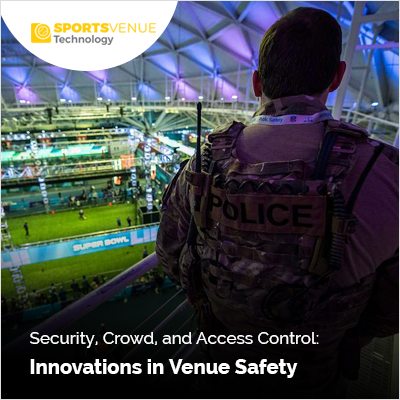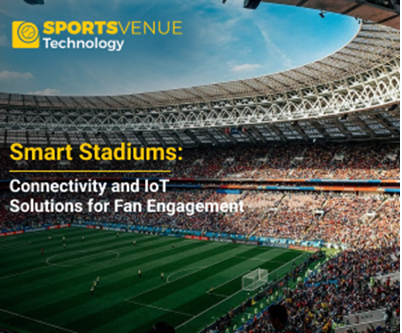Security, Crowd, and Access Control: Innovations in Venue Safety

Introduction:
In an era where safety is paramount, venues hosting large gatherings, events, and public spaces are continuously seeking innovative solutions to enhance security, manage crowds effectively, and implement robust access control systems. The convergence of technology and security has paved the way for groundbreaking innovations that not only bolster safety measures but also ensure a seamless and enjoyable experience for attendees. This article explores some of the latest advancements in security, crowd management, and access control that are transforming venue safety.
Smart Surveillance Systems:
Smart Surveillance Systems represent a revolutionary advancement in security, surpassing traditional CCTV installations by seamlessly integrating artificial intelligence (AI) and machine learning algorithms. These systems showcase real-time analytical capabilities, allowing for the immediate detection of unusual activities and potential threats within live video streams. With the incorporation of sophisticated facial recognition technology, smart surveillance systems excel in rapidly identifying individuals, even in densely populated environments. Their predictive capabilities extend to crowd movements, leveraging historical data and current dynamics for effective crowd management, resource optimization, and the prevention of overcrowding. The integration of these systems with centralized command centers provides a holistic perspective of the security landscape, enabling coordinated responses to incidents. While acknowledging the undeniable benefits, it's crucial to address concerns related to privacy, algorithmic bias, and regulatory compliance, ensuring a responsible implementation of these advanced surveillance technologies that strikes the right balance between enhanced security and individual rights.
Integrated Command Centers:
Integrated Command Centers stand at the forefront of modern venue security, revolutionizing the way security and access control systems are managed. In response to the growing complexity of security challenges, contemporary venues are embracing centralized command hubs that seamlessly amalgamate data from diverse security and access control sources. This consolidation empowers security personnel with a holistic and real-time view of the venue's security landscape. By monitoring multiple feeds simultaneously, security teams can swiftly identify potential threats, track crowd movements, and respond promptly to incidents. The integration of various systems into a single command center facilitates efficient coordination with law enforcement agencies, ensuring a rapid and synchronized response when needed. Real-time communication and data-sharing capabilities not only enhance situational awareness but also enable quicker and more informed decision-making, ultimately fortifying the overall security posture of the venue. As the importance of comprehensive security measures continues to grow, integrated command centers emerge as a critical component in creating safer and more resilient environments for large gatherings and events.
Biometric Access Control:
Biometric Access Control signifies a transformative approach to securing entry points, as technologies like fingerprint scanning, iris recognition, and facial biometrics take center stage in modern access control systems. The widespread embrace of these biometric solutions underscores a commitment to heightened security and efficiency. By uniquely identifying individuals based on their physiological or behavioral traits, biometric access control systems offer a robust and dependable means of managing entry points, notably diminishing the risk of unauthorized access. In contrast to traditional methods like key cards or PIN codes, which can be vulnerable to theft or unauthorized duplication, biometric authentication introduces a security layer inherently tied to the individual. This not only streamlines the access process but also minimizes the potential for security breaches. With ongoing technological advancements, biometric access control is on track to becoming the standard for ensuring secure and seamless entry experiences, while simultaneously mitigating vulnerabilities associated with conventional access methods.
Predictive Analytics for Crowd Management:
In the realm of venue safety, Predictive Analytics for Crowd Management emerges as a pivotal tool, offering venue operators the ability to proactively address potential challenges before they reach critical levels. Leveraging a combination of historical data, real-time crowd dynamics, and weather forecasts, predictive analytics provides a forward-looking perspective that enables operators to optimize crowd flow and allocate resources with precision. By scrutinizing past attendance patterns and demographic data, these analytics tools can anticipate peak times and areas prone to congestion, allowing for the strategic deployment of security personnel and resources. The result is a more efficient and controlled environment that not only enhances safety measures but also significantly improves the overall attendee experience. Predictive analytics, thus, stands as a crucial component in the arsenal of venue management, providing a proactive and data-driven approach to crowd management that ensures the safety and satisfaction of event attendees.
Contactless Technologies:
The surge in Contactless Technologies has been hastened by the global pandemic, reshaping the dynamics of access control and ticketing systems in public venues. Mobile ticketing, RFID wristbands, and Near Field Communication (NFC)-enabled devices have emerged as favored alternatives, delivering a seamless and touch-free entry experience into venues. The primary driver behind the adoption of these technologies lies in their ability to heighten security by minimizing physical contact points. Beyond addressing health concerns, contactless solutions contribute to a more efficient and streamlined entry process, particularly in high-traffic scenarios like concerts, sporting events, or crowded gatherings.
The convenience of mobile ticketing and the simplicity of RFID or NFC-based access control not only diminish the risk of disease transmission but also align with the broader trend of harnessing technology for a more user-friendly and secure event experience. As the world grapples with the challenges posed by the ongoing health crisis, contactless technologies emerge as a notable innovation, providing a safer and more efficient means for individuals to access public spaces.
Drones for Surveillance:
The integration of Drones for Surveillance marks a revolutionary stride in bolstering security measures, especially in expansive outdoor venues. Unmanned aerial vehicles (UAVs), commonly known as drones, equipped with advanced camera systems, are now actively deployed for surveillance purposes.
These airborne devices offer real-time aerial views, providing a comprehensive and dynamic perspective of large crowds and venue layouts. Drones play a crucial role in enhancing situational awareness by monitoring activities, crowd movements, and potential security threats from an elevated vantage point.
The agility and mobility inherent to drones make them invaluable assets in identifying and responding to security incidents swiftly. Their ability to cover vast areas efficiently allows security personnel to detect anomalies, assess situations, and track individuals or activities in real-time. Drones are particularly adept at navigating challenging terrains or crowded spaces, providing a level of responsiveness that traditional surveillance methods struggle to match.
In addition to their surveillance capabilities, drones contribute to the overall safety infrastructure by serving as rapid response tools. In the event of emergencies or security breaches, drones can be quickly deployed to assess the situation, relay critical information to command centers, and aid in coordinating an effective response.
While the use of drones for surveillance offers undeniable advantages in terms of coverage and responsiveness, it also raises considerations related to privacy and regulatory compliance. Striking a balance between the benefits of enhanced security and the protection of individual rights remains an ongoing challenge. As technology continues to advance, the integration of drones into venue security protocols exemplifies a forward-looking approach that leverages innovation to create safer and more resilient environments.
Conclusion:
As the realm of venue safety transforms, the integration of cutting-edge technologies remains a crucial factor in elevating security, crowd management, and efficient access control measures. These advancements not only tackle current challenges but also position venues to withstand emerging threats in the future. Through the adoption of these innovations, event organizers and venue operators have the opportunity to establish safer and more secure environments for attendees, ultimately ensuring a positive and memorable experience for all participants.





